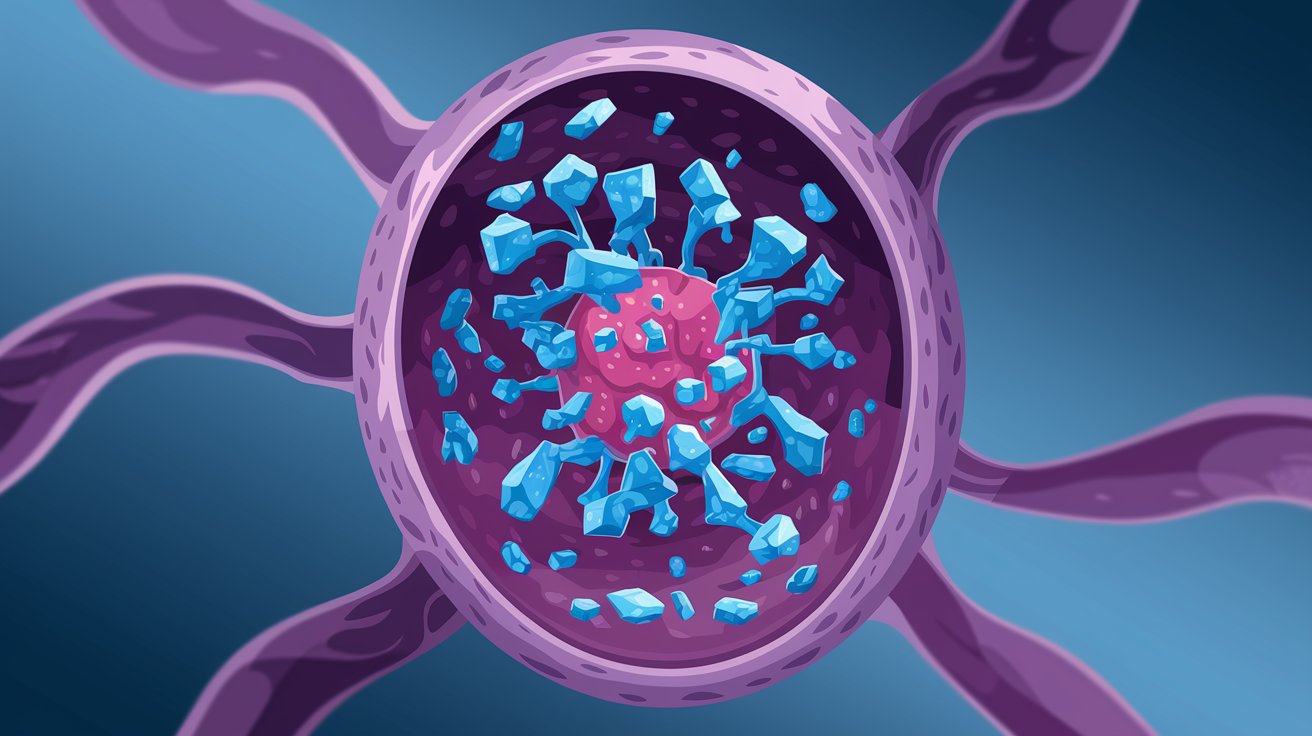
Glutamate Decarboxylase Deficiency is a rare genetic disorder that affects the production of gamma-aminobutyric acid (GABA), a crucial neurotransmitter in the brain. This deficiency can lead to various neurological issues, including seizures, developmental delays, and movement disorders. Understanding this condition is vital for those affected and their families.
In this article, we'll explore 25 facts about Glutamate Decarboxylase Deficiency to provide a clearer picture of its impact, symptoms, and potential treatments. From genetic causes to daily management tips, these facts aim to shed light on this complex disorder. Whether you're a caregiver, a medical professional, or someone seeking knowledge, these insights will help you grasp the essentials of this condition.
Key Takeaways:
- Glutamate Decarboxylase Deficiency (GDD) is a rare genetic disorder that affects brain function by causing a shortage of an important neurotransmitter called GABA. This can lead to developmental delays, movement disorders, and seizures.
- While there is no cure for GDD, treatments such as medications, therapy, and a ketogenic diet can help manage symptoms and improve quality of life. Ongoing research aims to develop more effective treatments for the future.
What is Glutamate Decarboxylase Deficiency?
Glutamate Decarboxylase Deficiency (GDD) is a rare genetic disorder affecting the enzyme responsible for converting glutamate to gamma-aminobutyric acid (GABA). This enzyme, known as glutamate decarboxylase (GAD), plays a crucial role in brain function. Let's dive into some fascinating facts about this condition.
-
GDD is caused by mutations in the GAD1 gene, which provides instructions for making the enzyme glutamate decarboxylase.
-
The deficiency leads to a shortage of GABA, an important neurotransmitter that inhibits nerve transmission in the brain, helping to regulate muscle tone and prevent seizures.
-
Symptoms of GDD can vary widely but often include developmental delays, intellectual disability, and movement disorders.
-
The condition is extremely rare, with only a few dozen cases reported worldwide.
-
GDD can be inherited in an autosomal recessive manner, meaning both copies of the gene in each cell have mutations.
Symptoms and Diagnosis
Understanding the symptoms and how GDD is diagnosed can help in managing the condition more effectively.
-
Early signs of GDD may include hypotonia (reduced muscle tone) and feeding difficulties in infants.
-
As children grow, they may experience ataxia (lack of muscle coordination), spasticity (stiff or tight muscles), and dystonia (involuntary muscle contractions).
-
Seizures are a common symptom and can be difficult to control with standard anti-epileptic medications.
-
Intellectual disability in GDD patients can range from mild to severe, affecting their ability to learn and perform daily activities.
-
Diagnosis typically involves genetic testing to identify mutations in the GAD1 gene.
Treatment and Management
While there is no cure for GDD, various treatments can help manage symptoms and improve quality of life.
-
Medications that increase GABA levels, such as benzodiazepines, may be prescribed to help control seizures and muscle spasms.
-
Physical therapy can assist in improving muscle tone and coordination, helping patients gain better control over their movements.
-
Occupational therapy can aid in developing daily living skills, enhancing independence and quality of life.
-
Speech therapy may be necessary for those with speech and language delays, helping them communicate more effectively.
-
A ketogenic diet, high in fats and low in carbohydrates, has shown some promise in reducing seizure frequency in GDD patients.
Research and Future Directions
Ongoing research aims to better understand GDD and develop more effective treatments.
-
Scientists are exploring gene therapy as a potential treatment, which involves correcting the defective GAD1 gene.
-
Stem cell therapy is another area of interest, with the potential to replace damaged neurons and restore normal brain function.
-
Animal models of GDD are being used to study the disease and test new treatments before they are tried in humans.
-
Clinical trials are essential for evaluating the safety and efficacy of new therapies, providing hope for future advancements.
-
Collaboration between researchers, clinicians, and patient advocacy groups is crucial for driving progress in GDD research.
Living with Glutamate Decarboxylase Deficiency
Living with GDD presents unique challenges, but with the right support, individuals can lead fulfilling lives.
-
Support groups and online communities can provide valuable resources and emotional support for families affected by GDD.
-
Early intervention programs can help children with GDD develop essential skills and reach their full potential.
-
Educational accommodations, such as individualized education plans (IEPs), can support students with GDD in the classroom.
-
Respite care services can offer temporary relief for caregivers, allowing them to rest and recharge.
-
Advocacy efforts are important for raising awareness about GDD and securing funding for research and support services.
Final Thoughts on Glutamate Decarboxylase Deficiency
Understanding Glutamate Decarboxylase Deficiency sheds light on a rare but impactful condition. This enzyme deficiency affects the production of GABA, a crucial neurotransmitter. Symptoms can range from seizures to developmental delays, making early diagnosis vital. Treatment options include medications, dietary changes, and sometimes surgery, aiming to manage symptoms and improve quality of life.
Raising awareness about this condition helps in early detection and better management. If you or someone you know shows signs of this deficiency, seeking medical advice is essential. With ongoing research, there's hope for more effective treatments in the future.
Stay informed, support those affected, and contribute to the broader understanding of this rare condition. Knowledge empowers us to make a difference in the lives of those dealing with Glutamate Decarboxylase Deficiency.
Frequently Asked Questions
Was this page helpful?
Our commitment to delivering trustworthy and engaging content is at the heart of what we do. Each fact on our site is contributed by real users like you, bringing a wealth of diverse insights and information. To ensure the highest standards of accuracy and reliability, our dedicated editors meticulously review each submission. This process guarantees that the facts we share are not only fascinating but also credible. Trust in our commitment to quality and authenticity as you explore and learn with us.
